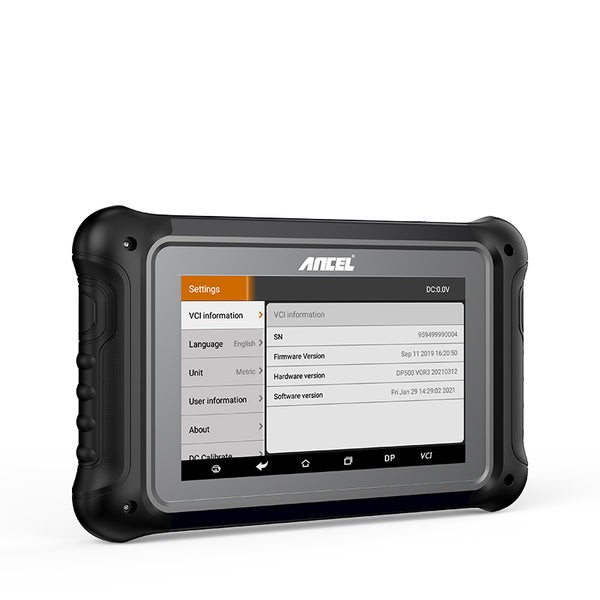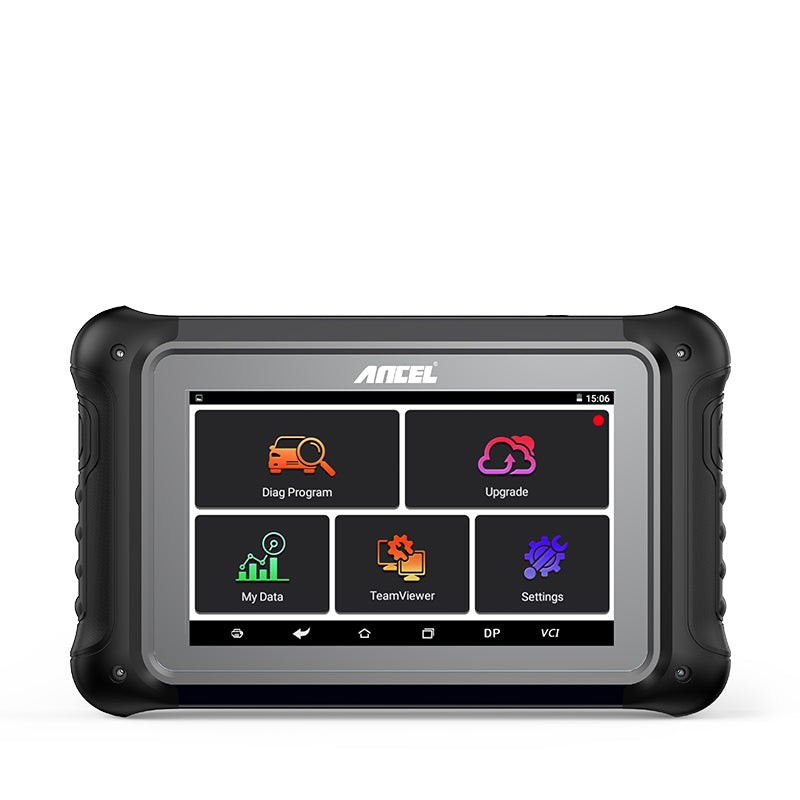Key programmers are indispensable tools for automotive locksmiths and car owners alike, enabling the programming of blank keys for a wide array of vehicles. In particular, Obd2 Key Programmer Software and dedicated devices have streamlined the process of adding new keys or rekeying, often circumventing the need for expensive dealership services.
When your car key fob malfunctions or you need a spare, understanding how to utilize OBD2 key programmer software becomes crucial. Programming your car key ensures vehicle functionality and mobility. However, it’s vital to approach key replacement with precision. Mishandling the process can lead to security vulnerabilities, module damage, vehicle immobilization, and costly repairs.
Exploring Different Key Programming Approaches
Modern vehicles offer various methods for key programming, each with its own set of procedures and requirements. Understanding these approaches is essential when considering using OBD2 key programmer software.
Onboard Programming: This method involves programming the key directly through the vehicle’s built-in computer system. It typically requires specific sequences of actions, often detailed in the vehicle’s owner manual. Onboard programming might involve turning the ignition on and off in a specific pattern or pressing certain pedals while holding the new key fob. While convenient for some models, onboard programming has limitations and might not be feasible for all vehicles, especially for adding keys when all previous keys are lost.
OBD2 Programming: This method leverages the vehicle’s On-Board Diagnostics II (OBD2) port, typically located beneath the dashboard. OBD2 key programmer software, often running on a laptop or a dedicated handheld device connected to the OBD2 port, communicates with the car’s computer to program keys. This approach offers a direct and often more versatile method for key programming. OBD2 key programmer software can handle a broader range of vehicles and programming scenarios compared to onboard methods. It is particularly useful for adding transponder keys, remote fobs, and smart keys. However, compatibility is key; not all vehicles support key programming via the OBD2 port, and specific software and hardware are required.
 DP500 makes key programming easy
DP500 makes key programming easy
“On-Bench” or EEPROM Programming: This more advanced technique involves directly accessing the vehicle’s electronic control module (ECM) or immobilizer unit. The module is physically removed from the vehicle, and specialized equipment is used to read and write data to the EEPROM (Electrically Erasable Programmable Read-Only Memory) chip, which stores key-related information. OBD2 key programmer software generally does not cover this method. EEPROM programming is often reserved for complex situations, such as when all keys are lost and OBD2 programming is not possible, or for older vehicles with less sophisticated electronic systems. It requires specialized skills and equipment and is typically performed by professional automotive locksmiths or technicians.
Related Reading: How to Read a Car Key Code
DIY Car Key Fob Programming at Home: A Step-by-Step Guide
For some vehicles and key fobs, DIY programming is possible and can be a cost-effective alternative to professional services. While OBD2 key programmer software is generally used by professionals, some basic key fob programming can be done at home without it, mainly for remote functionalities.
1. Verify Vehicle Compatibility: Crucially, begin by confirming if your vehicle make, model, and year support DIY key fob programming. Your owner’s manual is the best resource for this information. Online resources specific to your car model can also provide guidance.
2. Gather Necessary Materials: Ensure you have all the components ready: the new key fob, your existing working key (if you have one), and the vehicle’s owner manual or DIY programming instructions you’ve researched.
3. Enter Programming Mode: Accessing the programming mode varies significantly between vehicle manufacturers. Common methods involve inserting the existing key into the ignition and turning it to specific positions multiple times, or pressing combinations of buttons on the door panel or dashboard. Consult your vehicle’s manual for the precise sequence for your car.
4. Program the New Key Fob: Once in programming mode, follow the instructions to introduce the new key fob to your vehicle’s system. This often involves pressing buttons on the new and existing key fobs in a specific order and for specific durations. Timing is often critical in these procedures.
5. Test Key Fob Functionality: After completing the programming steps, thoroughly test the new key fob. Verify that it correctly locks and unlocks the doors, opens the trunk, and activates any other remote functions your vehicle supports.
6. Exit Programming Mode: Once you’ve confirmed the key fob is working, exit programming mode as per your vehicle’s instructions. This might involve simply turning off the ignition or pressing a specific button.
7. Repeat for Additional Key Fobs: If you are programming multiple key fobs, repeat the process for each one. Test each fob individually after programming to ensure each one functions correctly.
8. Keep Instructions Safe: Retain a copy of the programming instructions in a safe place. This will be useful if you need to program additional key fobs in the future or reprogram existing ones.
 Professional auto repair mechanic inspecting car
Professional auto repair mechanic inspecting car
VIN and Key Programming: What’s Possible?
It’s a common question whether a car key can be programmed using just the Vehicle Identification Number (VIN). Generally, the answer is no. While the VIN is a unique identifier for your vehicle, it doesn’t directly contain the cryptographic key programming data needed to add or reprogram keys.
Key programming necessitates accessing the vehicle’s onboard computer system or immobilizer module to input specific security codes or data associated with the new key. This process typically requires either a working existing key or access to the vehicle’s OBD2 port to use OBD2 key programmer software.
While some locksmiths or automotive technicians may have access to databases that can, for certain vehicles, generate key codes based on the VIN, this is not a universal capability and is not always reliable. Even if key codes are generated, they usually still require access to the vehicle, often through the OBD2 port and OBD2 key programmer software, to complete the programming process. Therefore, relying solely on the VIN for key programming is generally not feasible.
 Car Scanner | ANCEL
Car Scanner | ANCEL
ANCEL DP500: A Versatile OBD2 Key Programmer Software Solution
For professional-grade key programming, tools like the ANCEL DP500, which integrates robust OBD2 key programmer software, are essential. The ANCEL DP500 is a comprehensive tool designed for vehicle diagnostics and advanced key programming tasks.
This device empowers users to effortlessly add and erase keys, perform all-keys-lost programming, program remote controls, read key numbers and PIN codes, and synchronize remotes. Beyond key programming, it also offers 11 special reset service functions, including oil reset, ABS bleeding, gear learning, CVT reset, and battery registration. Functions like EPB adaptation, TPS adaptation, battery matching, and steering angle reset further enhance its versatility for automotive maintenance and repair.
The DP500’s efficient ECM reset capabilities, user-friendly interface, and broad vehicle compatibility make it an invaluable asset for automotive professionals and experienced DIY mechanics. With substantial onboard memory and SD card support, it ensures fast and efficient operation. Whether for vehicle recovery scenarios or routine maintenance, the ANCEL DP500, with its integrated OBD2 key programmer software, represents a significant advancement in automotive diagnostics and key programming technology.
Key Programming Duration with OBD2 Software: Factors to Consider
The time it takes to program a key using OBD2 key programmer software can vary. For simple key adding or erasing procedures, the process typically ranges from 5 to 15 minutes. However, more complex tasks, such as all-keys-lost programming, can extend from 30 minutes to, in some cases, up to 2 hours.
Several factors influence the programming duration:
- Complexity of the Procedure: All-keys-lost scenarios are inherently more time-consuming as they involve essentially rebuilding the vehicle’s security system from scratch. This requires extensive diagnostic checks, multiple programming cycles, and thorough verification.
- OBD2 Key Programmer Software and Tool Capabilities: Advanced OBD2 key programmer software and devices, like the ANCEL DP500, with faster processors, intuitive interfaces, and comprehensive vehicle databases, generally streamline the process and reduce programming times.
- Vehicle Make and Model: Different vehicle manufacturers employ varying security systems and protocols. Some vehicles may have more intricate systems or require additional security access steps, which can extend programming time.
- Information Availability: Having readily available key codes, PIN numbers, and access to manufacturer-specific data can significantly expedite the process. If this information needs to be retrieved or calculated, it will add to the overall time.
Despite these variables, modern OBD2 key programmer software and skilled technicians ensure that key programming is carried out as efficiently as possible, maintaining the security and reliability of the vehicle’s key system.
For the latest updates and insights on automotive diagnostic tools and OBD2 key programmer software, follow ANCEL.
FAQs about OBD2 Key Programmer Software
What tools are essential for OBD2 key programming?
OBD2 key programmer software and dedicated devices are the core tools. These tools connect to the vehicle’s OBD2 port and communicate with the car’s computer to program keys. They range from handheld programmers to software applications run on laptops, often used in conjunction with a vehicle interface.
Can I use OBD2 key programmer software myself, or is professional help needed?
While some basic diagnostic functions of OBD2 key programmer software might be user-accessible, key programming, especially advanced functions like all-keys-lost programming or immobilizer bypass, typically requires specialized knowledge, training, and professional-grade equipment. For complex tasks or for vehicles with advanced security systems, consulting a professional locksmith or dealership is highly recommended.
How long does key programming with OBD2 software usually take?
As mentioned earlier, simple key adding or erasing can take 5-15 minutes. More complex procedures, particularly all-keys-lost scenarios, can range from 30 minutes to 2 hours, depending on the factors outlined above.